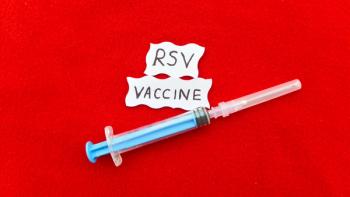
Oral GLP-1 Agonist Orforglipron Shows Promise for Type 2 Diabetes and Weight Management
Key Takeaways
- Orforglipron, a novel oral GLP-1 receptor agonist, shows significant HbA1C reduction and weight loss in patients with T2D, with a safety profile similar to injectable GLP-1 drugs.
- The ACHIEVE-1 trial demonstrated superior efficacy of orforglipron over placebo, with over 65% of patients achieving HbA1C ≤6.5% and significant weight loss.
Orforglipron showed promising results in managing type 2 diabetes, offering a potential oral alternative to injectable treatments.
New study results announced by Eli Lilly and Company demonstrated promising top-line results for orforglipron (Eli Lilly and Company), a novel oral glucagon-like peptide-1 (GLP-1) receptor agonist used to treat adults with type 2 diabetes (T2D) and inadequate glycemic control with diet and exercise.1
Understanding Orforglipron
Orforglipron is a nonpeptide GLP-1 receptor agonist that functions by stimulating insulin release from the pancreas and slowing gastric emptying, which can promote satiety, reduce food intake, and lead to weight loss. Its unique small-molecule structure distinguishes it from other GLP-1 drugs, potentially facilitating easier absorption within the body. Additionally, orforglipron could be less expensive than currently available injectable GLP-1 drugs like semaglutide (Ozempic; Novo Nordisk) or dulaglutide (Trulicity; Eli Lilly and Company), making it more accessible to patients.2
Eli Lilly and Company is conducting phase 3 studies on orforglipron, assessing its use for T2D and weight management in adults with obesity or overweight with at least 1 weight-related medical issue. Additionally, the oral GLP-1 is also being evaluated as a possible treatment for obstructive sleep apnea and hypertension among individuals with obesity.1
ACHIEVE-1 Trial Design and Objectives
In the 40-week phase 3, randomized, double-blind, placebo-controlled ACHIEVE-1 trial, researchers compared the efficacy and safety of 3-mg, 12-mg, and 36-mg doses of orforglipron as a monotherapy compared with a placebo in individuals with T2D and inadequate glycemic control with diet and exercise alone. A total of 559 individuals were randomly assigned to receive a 1:1:1:1 ratio of either 3 mg, 12 mg, or 36 mg of orforglipron or the placebo.1
The study aimed to demonstrate orforglipron’s superiority in reducing hemoglobin A1C (HbA1C) levels from baseline over 40 weeks, compared with placebo, in participants with T2D. Eligible individuals had not taken antidiabetic medications for at least 90 days, were insulin-naive, had an HbA1C between ≥7.0% and ≤9.5%, and had a body mass index (BMI) of ≥23 kg/m2. All individuals receiving orforglipron began with a 1-mg once-daily dose and gradually increased at 4-week intervals to their assigned final maintenance dose of 3 mg, 12 mg, or 36 mg, without the allowance of flexible dosing, according to investigators.1
The results demonstrated that individuals treated with orforglipron displayed superior HbA1C reduction by an average of 1.3% to 1.6% from a baseline of 8.0% compared with placebo at 40 weeks, meeting the study’s primary end point. Additionally, over 65% of individuals who received the highest dose of orforglipron attained an HbA1C less than or equal to 6.5%. Individuals taking the highest dose of orforglipron also lost an average of 16.0 lb.1
"ACHIEVE-1 is the first of 7 phase 3 studies examining the safety and efficacy of orforglipron across people with diabetes and obesity. We are pleased to see that our latest incretin medicine meets our expectations for safety and tolerability, glucose control, and weight loss, and we look forward to additional data readouts later this year," David A. Ricks, Eli Lilly and Company chair and CEO, said in a news release.1
The safety profile was consistent with other GLP-1 medications, with the most adverse events being mild to moderate, but all at higher rates than placebo. Common adverse events include diarrhea, nausea, dyspepsia, constipation, and vomiting. Treatment discontinuation due to adverse events occurred in 4% to 8% of individuals taking orforglipron, compared to 1% in the placebo group.1
Ongoing Research and Future Directions
The company noted that further results from ACHIEVE-1 will be shared at the American Diabetes Association’s 85th Scientific Sessions, and the submission for treatment with T2D is expected in 2026.1
"As a convenient once-daily pill, orforglipron may provide a new option and, if approved, could be readily manufactured and launched at scale for use by people around the world," Ricks concluded in a news release.1
REFERENCES
1. Lilly's oral GLP-1, orforglipron, demonstrated statistically significant efficacy results and a safety profile consistent with injectable GLP-1 medicines in successful Phase 3 trial. Lilly Investors. News release. April 17, 2025. Accessed May 23, 2025. https://investor.lilly.com/news-releases/news-release-details/lillys-oral-glp-1-orforglipron-demonstrated-statistically
2. What is orforglipron? Drugs.com. News release. Updated April 19, 2025. Accessed May 23, 2025. https://www.drugs.com/medical-answers/what-orforglipron-3574271/#:~:text=Orforglipron%20is%20a%20nonpeptide%20glucagon,level%20of%206.5%25%20or%20below.
Newsletter
Stay informed on drug updates, treatment guidelines, and pharmacy practice trends—subscribe to Pharmacy Times for weekly clinical insights.




















































































































































































































